Brutalist architecture is an architectural style which emerged during the 1950s in the United Kingdom, among the reconstruction projects of the post-war era. Brutalist buildings are characterised by minimalist constructions that showcase the bare building materials and structural elements over decorative design. The style commonly makes use of exposed, unpainted concrete or brick, angular geometric shapes and a predominantly monochrome colour palette; other materials, such as steel, timber, and glass, are also featured.

Marcel Lajos Breuer, was a Hungarian-born modernist architect and furniture designer.
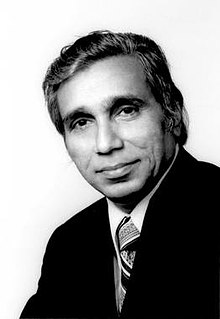
Fazlur Rahman Khan was a Bangladeshi-American structural engineer and architect, who initiated important structural systems for skyscrapers. Considered the "father of tubular designs" for high-rises, Khan was also a pioneer in computer-aided design (CAD). He was the designer of the Sears Tower, since renamed Willis Tower, the tallest building in the world from 1973 until 1998 and the 100-story John Hancock Center.

The George Washington Masonic National Memorial is a Masonic building and memorial located in Alexandria, Virginia, outside Washington, D.C. It is dedicated to the memory of George Washington, the first President of the United States and a Mason. The tower is fashioned after the ancient Lighthouse of Alexandria in Egypt. The 333-foot (101 m) tall memorial sits atop Shooter's Hill at 101 Callahan Drive. Construction began in 1922, the building was dedicated in 1932, and the interior finally completed in 1970. In July 2015, it was designated a National Historic Landmark for its architecture, and as one of the largest-scale private memorials to honor Washington.

Dallas City Hall is the seat of municipal government of the city of Dallas, Texas, United States. It is located at 1500 Marilla in the Government District of downtown Dallas. The current building, the city's fifth city hall, was completed in 1978 and replaced the Dallas Municipal Building.
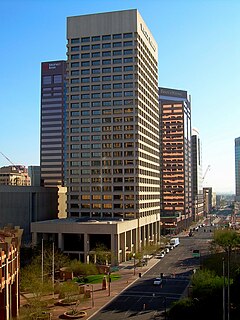
The Wells Fargo Plaza is a high-rise skyscraper located on 100 West Washington Street in Downtown Phoenix, Arizona, United States. It opened as the First National Bank Plaza on October 25, 1971, and was later known as the First Interstate Bank Building. It is 356 feet tall. It is designed in the Brutalist style, an architectural style spawned from the International Style. The “raw concrete” element of Brutalist architecture allows for no exterior finish which exposes the rough concrete columns and beams.
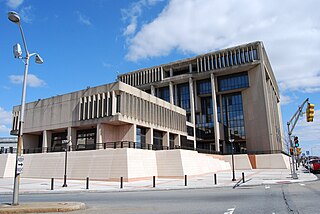
Fall River Government Center is the location of the municipal government offices in the city of Fall River, Massachusetts, United States. Located at One Government Center, and constructed directly over Interstate 195, it was the first public building built over a Federal interstate highway. It replaced the city's historic 19th century city hall which had been demolished in the early 1960s as part of the construction of Interstate 195, which cuts through the center of the city's downtown area. Delayed and plagued by problems during construction, the new city hall opened in 1976. In 2008, the building and site underwent a multimillion-dollar exterior renovation.

The Robert C. Weaver Federal Building is a 10-story office building in Washington, D.C., owned by the federal government of the United States. Completed in 1968, it serves as the headquarters of the United States Department of Housing and Urban Development (HUD). Built by the General Services Administration, it is a prime example of Brutalist architecture. The structure is named for Dr. Robert C. Weaver, the first Secretary of Housing and Urban Development and the first African American Cabinet member.

The United States Tax Court Building is a courthouse located at 400 Second Street, Northwest, Washington, D.C., in the Judiciary Square neighborhood. It serves as the headquarters of the United States Tax Court. Built in 1972, the building and its landscaped plaza occupy the entire block bound by D Street, E Street, Second Street, and Third street.
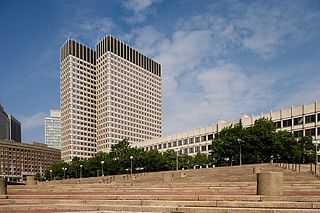
John Fitzgerald Kennedy Federal Building is a United States federal government office building located in the Government Center area of Boston, Massachusetts, adjacent to City Hall Plaza and diagonally across from Boston City Hall. An example of 1960s modern architecture, and designed by Walter Gropius and The Architects Collaborative with Samuel Glaser, it is a complex that consists of two offset 26-floor towers that sit on-axis to each other and a low rise building of four floors that connects to the two towers through an enclosed glass corridor. The two towers stand at a height of 387 feet (118 m). The complex was built in 1963-1966. It was listed on the National Register of Historic Places in 2021.

The Strom Thurmond Federal Building and United States Courthouse is United States federal building located in Columbia, South Carolina, which was completed in 1979 and which served for twenty-five years as a courthouse of the United States District Court for the District of South Carolina. It is named for long-time Senator Strom Thurmond, and is listed on the National Register of Historic Places.
Vlastimil Koubek was a Czech American architect who designed more than 100 buildings, most of them in the Washington, D.C., metropolitan area. When he died, he had designed buildings worth more than $2 billion. Most of his work is Modernist in style, although he developed a few structures in other vernaculars. He created the site plan for the redevelopment of Rosslyn, Virginia, and his Ames Center anchored the area's economic recovery. He also designed the World Building in Silver Spring, Maryland, which sparked redevelopment of that town's downtown and the L'Enfant Plaza Hotel in Washington, D.C., amongst many other buildings. In 1985, Washingtonian magazine considered him to be one of 20 people "who in the past 20 years had the greatest impact on the way we live and who forever altered the look of Washington." In 1988, The Washington Post newspaper said his Willard Hotel renovation was one of 28 projects in the area which made a signal contribution to the "feel" and look of Washington, D.C.

The Mary E. Switzer Memorial Building is a federally owned office building located at 330 C Street SW in Washington, D.C. in the United States. The Egyptian Revival structure was originally named the Railroad Retirement Board Building. It was designed by Charles Klauder and Louis A. Simon and completed on September 15, 1940. Although intended for the Railroad Retirement Board, its first occupant was to the United States Department of War. By Act of Congress, it was renamed the Mary E. Switzer Memorial Building on October 21, 1972, becoming the first federal building to be named for a woman.

The James V. Forrestal Building is a low-rise Brutalist office building located in Washington, D.C., in the United States. Originally known as Federal Office Building 5, and nicknamed the Little Pentagon, the Forrestal Building was constructed between 1965 and 1969 to accommodate United States armed forces personnel. It is named after James Forrestal, the first United States Secretary of Defense. It became the headquarters of the United States Department of Energy after that agency's creation in 1977.

The construction of Arlington Memorial Bridge was a seven-year construction project in Washington, D.C., in the United States to construct the Arlington Memorial Bridge across the Potomac River. The bridge was authorized by Congress in February 1925, and was completed in January 1932. As a memorial, its decorative features were extensive and intricate, and resolving the design issues over these details took many years. Tall columns and pylons topped by statuary, Greek Revival temple-like structures, and statue groups were proposed for the ends of the bridge. Carvings and inscriptions were planned for the sides of the bridge, and extensive statuary for the bridge piers.

Julius Kahn was an American engineer, industrialist, and manufacturer. He was the inventor of the Kahn system, a reinforced concrete engineering technique for building construction. The Kahn system, which he patented in 1903, was used worldwide for housing, factories, offices and industrial buildings. He formed his own company, Trussed Concrete Steel Company, as a manufacturing source for his inventions. He also founded United Steel Company and was chairman of Truscon Laboratories.
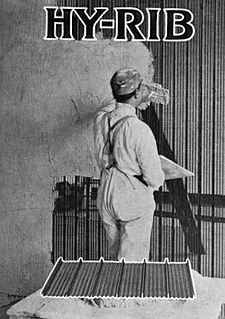
Hy-Rib was a brand name for a product manufactured by the Trussed Concrete Steel Company. It is an engineering reinforcement system for floors, walls, and ceilings of buildings and houses. This product is a derivative of the Kahn Trussed Bar for beams and columns that was invented by Julius Kahn. Kahn engineered the Hy-Rib products and they were first manufactured in 1908.
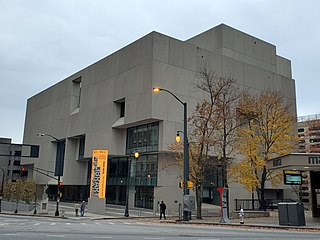
The Atlanta Central Library in Downtown Atlanta is the main library and headquarters of the Atlanta–Fulton Public Library System. The library, built from 1977 to 1980, has a Brutalist design by architect Marcel Breuer – his last work, and his only work in Atlanta. The building was partially renovated in 2002, and a complete renovation took place from 2018 to 2021, following a 2016 vote against demolishing the structure.

945 Madison Avenue, also known as the Breuer Building, is a museum building in the Upper East Side of Manhattan, New York City. The Marcel Breuer-designed structure was built from 1964 to 1966 as the third home for the Whitney Museum of American Art. The Whitney moved out in 2014, after nearly 50 years in the building. In 2016, it was leased to the Metropolitan Museum of Art and became the Met Breuer, which closed in 2020. The building currently houses the Frick Madison, the temporary home of the Frick Collection set for a two-year period that began in March 2021. There are no public plans for the building after the Met's lease expires in 2023.



















